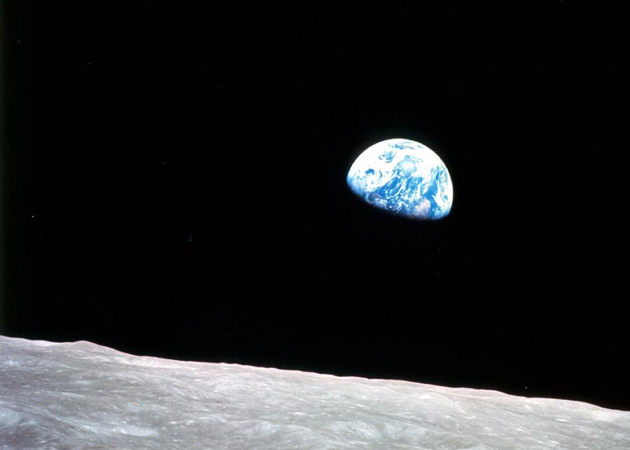If you watched President Obama’s major speech on climate change, you may have noticed a recurrent phrase: “our children.” The president said the word “children” 15 separate times in the speech. He also spoke repeatedly about “future generations” and how a sweltering planet imperils them. The threat of climate itself, meanwhile, garnered considerable scientific detail in the speech, replete with references to dangerous and destructive impacts that are already occurring—from rising seas to parched land and torched forests.
“I refuse to condemn your generation and future generations to a planet that’s beyond fixing,” the president said.
When you stop and think about it for a minute, the messaging change here is pretty extraordinary. After all, four years ago the administration’s central talking point on climate change did not mention climate change. Rather, the idea was that greening our economy would confer a major benefit in the form of a profusion of green jobs. “It’s ironic that the administration, which helped launch ‘Don’t talk about climate change, talk about economics and jobs,’ has flipped to ‘Let’s talk about climate change and frame it in moral terms,'” says Joe Romm, a former Clinton administration clean energy official and editor of the leading climate blog Climate Progress. Meanwhile, as the Google Trends search above shows, interest in “green jobs” peaked early in Obama’s first term and has been declining ever since.
So how—and why—did Obama finally change how he pitches climate action to the public?
To answer that question, let’s first warp back to the economically torturous spring of 2009. Such was the backdrop for a now infamous high-level White House meeting with environmentalists, in which members of the green community were reportedly instructed not to talk about the science of climate change. That wasn’t going to be the White House’s message, they learned—rather, the focus would be on clean energy and jobs. Thus was the groundwork laid for Obama’s later “climate silence,” as increasingly fed-up climate hawk activists began to put it.
That same spring, the Dow Jones Industrial Average crashed, and unemployment soared. No wonder, then, that the White House—in a strategy allegedly designed by then senior adviser David Axelrod—decided to sell climate action as an economic positive. Not only did the frame seem a good fit for the times, it also had the benefit of leapfrogging past often bewildering fights over the science of climate change. After the “ClimateGate” pseudoscandal hit later that year, unleashing unprecedented attacks on climate researchers, the economic message must have seemed like a pretty wise idea.
Alas, the White House’s favored cap-and-trade bill—pitched, economically, as the “American Clean Energy and Security Act”—died in the Senate in 2010. Meanwhile, the clean energy message fell under attack from political conservatives who went looking for scandal in government-supported clean energy projects, and eventually came upon the solar cell manufacturer Solyndra, which had received a large government loan guarantee but went bankrupt in late 2011. From a communications standpoint, the accuracy of the right’s allegations about Solyndra—which have since been disproved—doesn’t really matter. What counts is that the green jobs message could now be met with counterclaims about corruption and government waste.
By the end of 2011, then, climate change looked like a political loser, and green jobs had tumbled into the maw of political polarization. On climate, Obama became a man without a message—which probably explains why, especially during the presidential campaign, he didn’t talk much about the issue (his 2012 Democratic National Committee acceptance speech—which in effect previewed his new climate message—being a notable exception).
But at the same time, extreme weather was really starting to catch our attention. The year 2011 saw a stunning 14 separate weather events, ranging from Hurricane Irene to multiple tornado strikes, whose damage exceeded $1 billion. That was a new record for the number of different high-cost disasters in a single year. Then came 2012, and winter heat that seemed simply unreal. It felt as if the normal pattern of changing seasons had simply ceased to exist.
Not only did this weird weather start to change public opinion—it changed scientists themselves. Some, like Kevin Trenberth of the National Center for Atmospheric Research, began to question the old adage that it is impossible to link any particular weather event to climate change. Others, at minimum, began to wonder whether that was the only thing to be said about the matter. “If you go back five years, it was very hard to find a lot of scientists making the extreme weather connection,” Romm says. “That changed, because the last two and a half years have just been jaw dropping.”
Then, environmental strategists themselves—accompanied by public opinion experts—started making the case that the climate issue, messaged properly, could be a political winner, rather than the communications dog that some in the White House seemed to think it was.
One of the most important of those strategists was Betsy Taylor of Breakthrough Strategies and Solutions, whose research and analysis, conducted with Obama polling firm Harstad Strategic Research, emphasized the importance of talking about extreme weather and “our kids,” and appears to have influenced the White House’s messaging shift. “The president continues to embrace American ingenuity,” says Taylor of the shift away from “green jobs.” “But he’s rooting it in a message that the right wing really cannot attack: That all you have to do is look out your kitchen window right now and you can see that our climate is changing.”
Notably, all of these necessary elements for Obama’s messaging shift were in place prior to Superstorm Sandy. That event just put it over the top, accompanied by multiple exclamation points. A new climate message was born, impelled by reality itself. Obama then chose his moment and delivered a climate speech for the ages.
In other words, the biggest factor behind Obama’s messaging shift on climate was…the climate. It made itself manifest in our weather, in our extremes, in our fires and hurricanes and droughts. Inevitably, people noticed—all the way up to the president.
“Back under Clinton, the president had to talk about climate change in the future tense,” observes Paul Bledsoe, a senior fellow on energy and climate at the German Marshall Fund and former Clinton White House climate aide. “‘This is going to happen, that is going to happen.’ And now, Obama can talk about climate change impacts very much in the present tense.
“And that’s all the difference in the world.”














